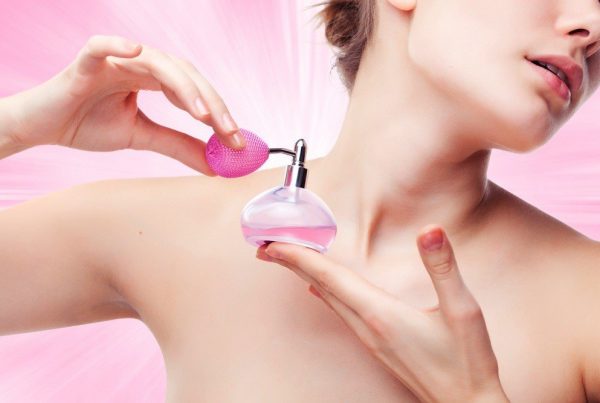Have you ever stopped to think about the environmental impact that your favorite cosmetics are having on the planet? Well, L’Oréal has. In fact, the world’s largest cosmetic company has shared that it plans to be a fully sustainable beauty brand by 2030.
Influenced by coronavirus pandemic, the beauty brand set out to evaluate how they operate in general. The L’Oréal For The Future is the company’s new sustainability program that pledges to not only focus on the regeneration of damaged natural ecosystems and efforts to prevent climate change but it also aims to support organizations that support highly vulnerable women, the first victims of the social as well as economic crisis generated by the pandemic.
“L’Oréal’s sustainable revolution is entering a new era,” explains the chairman and CEO of L’Oréal, Jean-Paul Agon. “The challenges the planet is facing are unprecedented, and it is essential to accelerate our efforts to preserve a safe operating space for humanity.”
“We do so in our own business operations and in our contribution to the society at large. We know that the biggest challenges remain to come and L’Oréal will stay faithful to its ambition: to operate within the limits of the planet.”
“Over the past decade, we have profoundly transformed our company, putting sustainability at the very core of our business model,” adds L’Oréal’s chief corporate responsibility officer, Alexandra Palt. 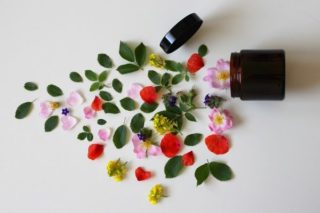
“With our new commitments, we are entering a new phase of acceleration of that transformation: going beyond our direct environmental impact, helping consumers to make more sustainable choices, as well as generating positive social and environmental contributions. As an industry leader, we consider that it is our role to contribute to building an inclusive and sustainable society.”
What is sustainable beauty?
Unfortunately, terms such as sustainable beauty are not regulated. Beauty brands can claim to be sustainable and consumers will be left wondering if it’s just clever marketing or transparency.
Terms such as cruelty-free and vegan are often used to show off the brand’s sustainable beauty practices. However, it’s not that simple. For instance, a brand may be cruelty-free. However, this does not mean that the products do not contain animal ingredients. Additionally, the brand may also contain ingredients that are damaging to the environment. This then makes it not as sustainable or cruelty-free as it claims to be.
So what makes a brand a sustainable one?
A beauty company can be considered a sustainable beauty brand if it practices sustainable and ethical sourcing of its beauty ingredients. The brand needs to be aware of every aspect of its supply chain. It also needs to ensure that its sourcing and processing have a positive environmental, as well as social, impact.
Why is sustainable beauty important?
Sadly, the cosmetics industry contributes to a number of environmental concerns. These range from deforestation and damaged coral reefs to air pollution and plastic waste. That said, many of these issues are often triggered by a brand’s choice of ingredients. Unfortunately, there is a lax when it comes to the testing and regulation of cosmetic ingredients.

Pavlovska Yevheniia/Shutterstock
Now, while the European Union has implemented measures regarding the banning of certain chemicals, cosmetic manufacturers in the U.S., as well as the rest of the world, remain largely unregulated.
That said, below are some of the most common environmental concerns caused by your favorite beauty brands.
Issue #1: the cost to be natural
Many beauty brands have jumped on the natural bandwagon. These brands are more concerned with making a profit as quickly and cheaply as possible. As a result, they seek out natural ingredients in large quantities, in order to meet demand. Unfortunately, they are willing to meet this demand regardless of the impact on the environment. This then means they’re adopting unsustainable farming practices which include the rise of pesticide use, as well as the exploitation of workers.
Issue #2: Toxic chemicals
Not only can some toxic beauty ingredients affect your health and skin, but once you wash off the product, these ingredients can damage the environment. These chemicals do not break down. Instead, they build up in our ecosystems and end up in our oceans, lakes, streams, rivers, and water supply.
Some common toxic chemicals found in cosmetic products include:
P-Phenylenediamine
P-phenylenediamine is most often found in dark hair coloring and lipsticks. It may alter fish behavior and even reduce the animal plankton population.
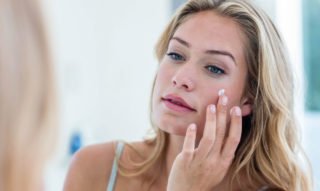
Triclocan
Triclocan is used in hand sanitizers and deodorants. It has been linked to affecting the reproductive cycles, population, and growth patterns of aquatic life (1).
Dioxane
Found in shampoos and bubble baths, dioxane is an ingredient that’s been found to be quite hazardous for marine life as it causes behavior changes and creates a toxic environment for aquatic life (2).
Dibutyl phthalate
Dibutyl phthalate or DBP, is found in nail polish. Now, while it helps to keep your nails looking pretty, DPB poses a severe threat to aquatic life as it’s been linked to genetic mutations and altered reproductive cycles (3).
Issue #3: Plastic waste
Plastic waste is a huge environmental problem. It doesn’t help that the beauty industry continues to include plastic in its packaging. In fact, Zero Waste reports that more than 120 billion units of packaging are produced every year by the global cosmetics industry, much of which is not recyclable.
Issue #4: The effects of palm oil
The wide use of palm oil has led to a devastating impact on the rainforest.
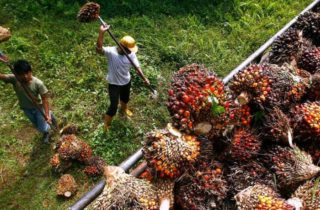
Credit: Asianews
Firstly, to meet the rising demand for palm oil, acres of rainforest are being cut down at alarming rates. Palm oil is produced through the fruits collected from the trees. Unfortunately, the trees can grow too high, making it difficult to collect the fruits. Thus for manufacturers, the only solution is to cut down the tree and set the forest alight. This will help to make room for a new tree. This process contributes to deforestation which we know leads to climate change.
Additionally, the production of palm oil also affects animal habitats for endangered species as research has found that an estimated 100,000 orangutans have died in the past 16 years due to the high demand for palm oil.
Moreover, the indigenous people of Malaysia and Indonesia have had to watch their land being taken away, as well as their livelihood as they depend on the forests for their survival.
Now, while you may be looking to reduce your use of palm oil, many products use terms like “vegetable oil” or “vegetable fat”. The best way to ensure you are not supporting palm oil is to avoid any product that reads “vegetable oil”.
Issue #5: Air pollution
Your favorite perfumes, hairsprays, and deodorants may be polluting the environment just as much as car emissions.
According to a 2018 study published in the journal Science, scented products emit the same level of chemical vapors as petroleum emissions from cars in the form of ‘volatile organic compounds (VOCs). These compounds interact with other particles in the air, and they can cause health issues for our lungs.
Additionally, the research found that the shipping industry, which the beauty industry is quite involved in, contributes more than 1 billion tons of CO2 a year — and this is not accounting for freight or air shipping.
Issue #6: Coral Reefs
In 2015, a study published in the journal Archives of Environmental Contamination and Toxicology found that a common chemical used in many sunscreens was highly toxic to juvenile corals and other marine life.![jumping [longevity live]](https://longevitylive.com/wp-content/uploads/2018/10/animal-aquatic-corals-847393-320x240.jpg)
Oxybenzone (Benzophenone-3) helps to absorb UVA and UVB rays. Unfortunately, it’s also responsible for harming the coral reefs. Coral reefs house diverse ecosystems that help maintain aquatic life. Any harm that comes to them can have a disastrous impact on marine life.
How does L’Oréal plan on being a sustainable beauty brand?
Plastic waste
The Consumer Products Division haircare lines (brands include L’Oréal Paris, Garnier, Maybelline) plans on having all of their products made with 100% recycled plastic by 2025.
Additionally, as part of the #passonplastic campaign, La Roche Posay plans on releasing sunscreens with paper-based tubes in 2021.
Environmental consciousness
With the launch of its Product Environmental & Social Impact Labelling scheme, L’Oréal will be rating products from A (world-class for sustainability) to E, based on their environmental impact.
Recycling
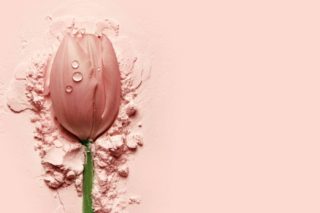
Ekaterina Jurkova/Shutterstock
By 2030, 100% of the plastics used for L’Oréal’s products will be either from recycled or bio-based sources.
Manufacturing
L’Oréal aims for all of its production sites to be carbon neutral through the use of 100 percent renewable energy by 2050. By 2030, however, the beauty brand had pledged to reduce its greenhouse gas emissions by at least 50 percent compared to 2016.
What can you do?
You don’t have to rely on L’Oréal when it comes to sustainable beauty as you can also do your part. This includes:
- Check labels for a little rabbit – it represents the product as cruelty-free.
- When buying products, choose to go plastic-free
- Choose products with packaging made with glass and recycled paper.
- Check labels for microbeads, vegetable oils, and other toxic ingredients.
- Visit Kiehl’s and Mac to return your empty products. Kiehl’s has a Recycle & Be Rewarded scheme. Mac has its Back to Mac scheme. For six Mac containers returned to the counter or online, you will receive a free lipstick of your choice as a thank you.
- Try alternatives to cotton wool and cosmetic wipes such as washcloths or reusable cotton wool-like wipes.
The bottom line
Whether you’re inspired by L’Oréal’s actions, or you’re already adopting a sustainable beauty routine, you should know that your actions are impacting the health as well as the longevity of the environment and you should remember that you can care for both the health of your skin and that of our planet.
References
Downs, C. A., Kramarsky-Winter, E., Segal, R., Fauth, J., Knutson, S., Bronstein, O., … & Pennington, P. (2016). Archives of environmental contamination and toxicology, 70(2), 265-288.
McDonald, B. C., De Gouw, J. A., Gilman, J. B., Jathar, S. H., Akherati, A., Cappa, C. D., … & Cui, Y. Y. (2018). Science, 359(6377), 760-764.
Shen, C., Wei, J., Wang, T., & Wang, Y. (2019). PeerJ, 7, e6584.
Tatarazako, N., Ishibashi, H., Teshima, K., Kishi, K., & Arizono, K. (2004). Environmental sciences : an international journal of environmental physiology and toxicology, 11(2), 133–140.
Voigt, M., Wich, S. A., Ancrenaz, M., Meijaard, E., Abram, N., Banes, G. L., … & Gaveau, D. (2018). Current Biology, 28(5), 761-769.


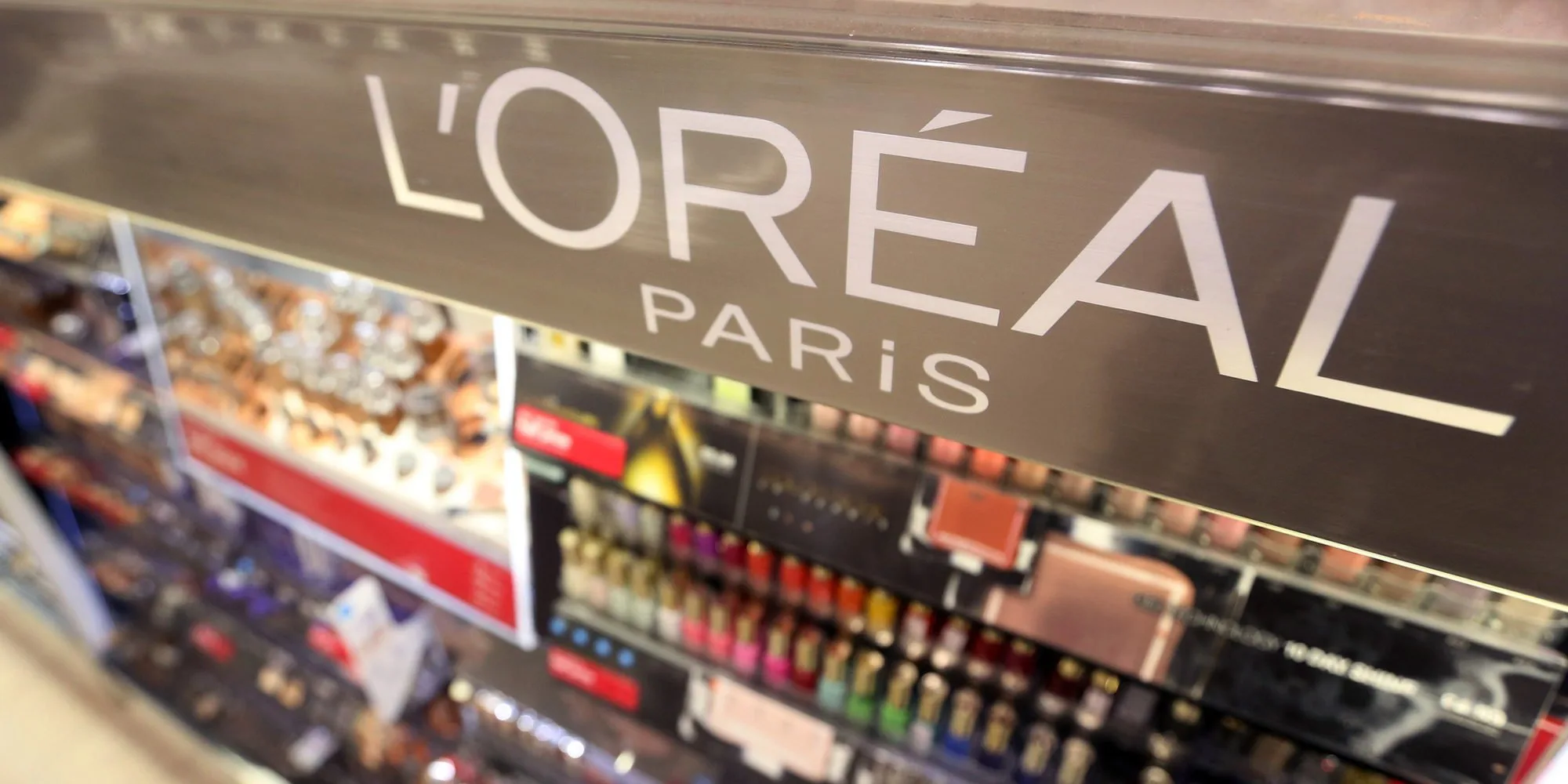
![women [longevity live]](https://longevitylive.com/wp-content/uploads/2020/01/photo-of-women-walking-down-the-street-1116984-100x100.jpg)







